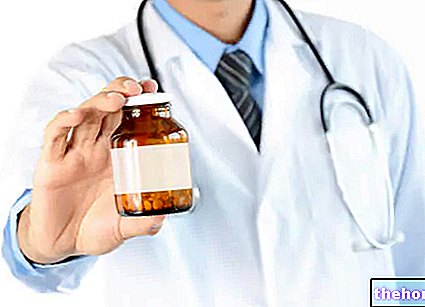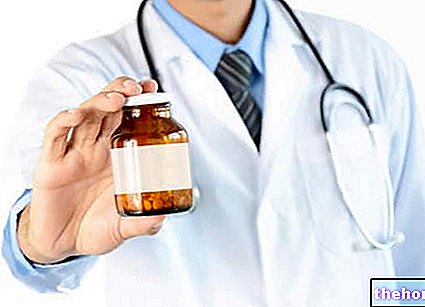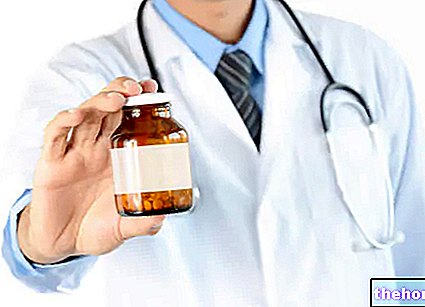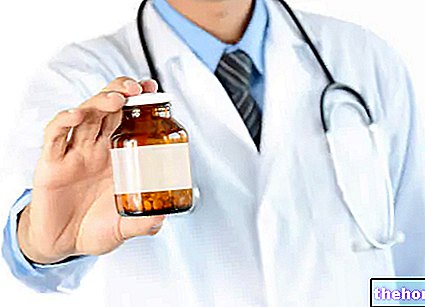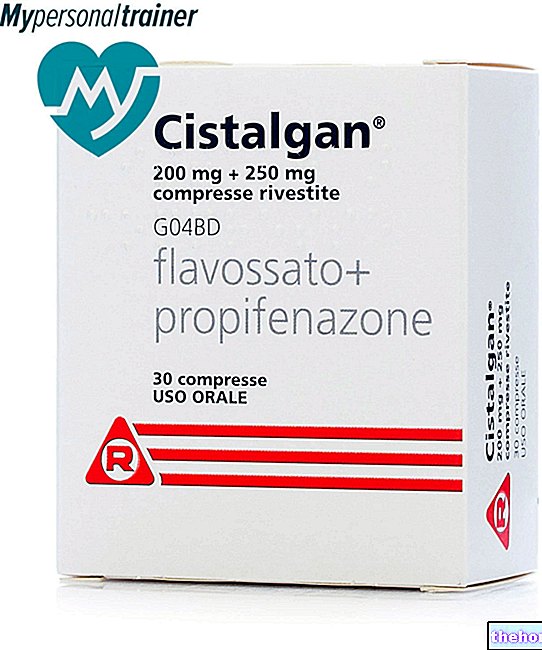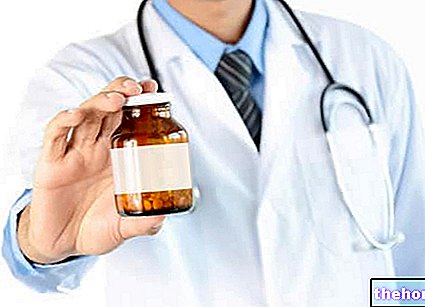Active ingredients: Bromhexine (bromhexine hydrochloride)
Bisolvon Linctus 4 mg / 5 ml syrup
Why is Bisolvon Linctus used? What is it for?
WHAT IS IT
Bisolvon syrup is a mucolytic: it thins the deposits of viscous mucus in the respiratory tract and thus facilitates their elimination.
WHY IT IS USED
Bisolvon syrup is indicated in the treatment of secretion disorders (for example the presence of cough and phlegm) in acute and chronic respiratory diseases.
Contraindications When Bisolvon Linctus should not be used
Hypersensitivity to the active substance or to any of the excipients.
The drug is contraindicated in children under 2 years of age.
Breastfeeding (see "What to do during pregnancy and" breastfeeding ").
In case of hereditary conditions which may be incompatible with one of the excipients (see "It is important to know that")
Precautions for use What you need to know before taking Bisolvon Linctus
Treatment with Bisolvon syrup leads to increased bronchial secretion (this promotes expectoration). Do not use for prolonged treatment. In the treatment of acute respiratory conditions, consult your doctor if symptoms do not improve or worsen during therapy
Interactions Which medications or foods may change the effect of Bisolvon Linctus
Tell your doctor or pharmacist if you have recently taken any other medicines, even those without a prescription.
No interactions with other medicinal products have been reported.
Warnings It is important to know that:
In very few cases, severe skin lesions such as Stevens Johnson syndrome and toxic epidermal necrolysis (NET) have been observed simultaneously with the administration of expectorants such as bromhexine. Most of these could be explained by the severity of underlying diseases or other medications taken at the same time.
Also in the early stages of Stevens Johnson syndrome or toxic epidermal necrolysis (NET), patients may initially experience non-specific flu-like symptoms such as fever, chills, rhinitis, cough and sore throat. A Symptomatic treatment with cough and cold therapy may be initiated due to these misleading symptoms Therefore, if new skin or mucosal lesions occur, consult your doctor immediately and discontinue treatment with bromhexine as a precaution.
Mucolytics can induce bronchial obstruction in children under 2 years of age. In fact, the drainage capacity of bronchial mucus is limited in this age group, due to the physiological characteristics of the respiratory tract. They should therefore not be used in children under 2 years of age (see paragraph "When it should not be used" ).
When it can be used only after consulting your doctor
There are no absolute contraindications, but in patients with gastroduodenal ulcer it is recommended to use it after consulting your doctor.
It is also advisable to consult your doctor in cases where these disorders have occurred in the past.
Pregnancy (see "What to do during pregnancy and" breastfeeding ").
What to do during pregnancy and breastfeeding
Ask your doctor or pharmacist for advice before taking any medicine.
There are limited data on the use of bromhexine in pregnant women. Animal studies do not indicate direct or indirect harmful effects with respect to reproductive toxicity. As a precautionary measure, it is preferable to avoid the use of Bisolvon during pregnancy.
It is not known whether bromhexine and its metabolites pass into human milk. Available pharmacodynamic and toxicology data in animals have shown excretion of bromhexine and its metabolites in breast milk. A risk to breastfed infants cannot be excluded.
Bisolvon should not be used while breastfeeding. Consult your doctor if you suspect pregnancy or plan a maternity leave.
Fertility
No studies have been conducted to investigate the effects on human fertility. Based on preclinical experience there are no indications of possible effects on fertility following the use of bromhexine.
Important information about some of the ingredients
The medicine contains liquid maltitol, so in case of ascertained intolerance to sugars contact your doctor before taking the medicine. This medicine may have a mild laxative effect. The caloric value of maltitol is 2.3 kcal / g.
Effects on ability to drive and use machines
No studies on the effects of bromhexine hydrochloride on the ability to drive and use machines have been performed.
Dosage and method of use How to use Bisolvon Linctus: Dosage
How many
The following dosages are recommended unless otherwise prescribed
Adults: 5 - 10 ml 3 times a day.
In adults, at the start of treatment, the total daily dose may need to be increased up to 48 mg divided into three times.
Children over 2 years of age: 2.5 - 5 ml 3 times a day
The syrup can be administered to diabetics and children over 2 years, it does not contain fructose or sucrose.
Do not exceed the recommended dose.
When and for how long
It is recommended to take the drug after meals.
Consult your doctor if the disorder occurs repeatedly or if you have noticed any recent changes in its characteristics.
Warning: use only for short periods of treatment.
Like
Administer orally.
To measure the appropriate dose, use the conical measuring cup included in the package (with notches of 1.25 ml equal to 1 mg of bromhexine hydrochloride, 2.5 ml equal to 2 mg of bromhexine hydrochloride and 5 ml equal to 4 mg of bromhexine hydrochloride ).
Overdose What to do if you have taken too much Bisolvon Linctus
Up to now, no specific symptoms of overdose have ever been reported in humans. In reported cases of accidental overdose and / or medication errors, the symptoms observed correspond to the known side effects of Bisolvon at recommended dosages, and may be symptomatic treatment necessary In case of accidental ingestion of an excessive dose of Bisolvon, notify your doctor immediately or go to the nearest hospital.
If you have any questions about the use of Bisolvon, ask your doctor or pharmacist.
Side Effects What are the side effects of Bisolvon Linctus
Like all medicines, Bisolvon can cause side effects, although not everybody gets them.
Disorders of the immune system, skin, subcutaneous tissue, respiratory system, thorax and mediastinal disorders:
- frequency not known: anaphylactic reaction including anaphylactic shock, angioedema, bronchospasm, urticaria, pruritus;
- frequency rare: skin rash and other hypersensitivity reactions.
Diseases of the gastrointestinal system:
- frequency uncommon: nausea, vomiting, diarrhea and pain in the upper abdomen.
Compliance with the instructions contained in the package leaflet reduces the risk of undesirable effects.
These side effects are usually transient. However, when they occur, it is advisable to consult your doctor or pharmacist.
If any of the side effects gets serious, or if you notice any side effects not listed in this leaflet, please inform your doctor or pharmacist.
Request and fill in the Undesirable Effects report form available at the pharmacy (form B).
Expiry and Retention
Expiry: see the expiry date indicated on the package.
The expiry date indicated refers to the product in intact packaging, correctly stored. Warning: do not use the medicine after the expiry date indicated on the package.
After first opening the bottle, the product must be consumed within 12 months; after this period the excess product must be eliminated.
It is important to always have the information on the medicine available, so keep both the box and the package leaflet.
Keep this medicine out of the reach and sight of children
Medicines should not be disposed of via wastewater or household waste. Ask your pharmacist how to dispose of medicines you no longer use. This will help protect the environment.
COMPOSITION
5 ml of syrup contains:
active ingredient: bromhexine hydrochloride 4 mg (equivalent to bromhexine 3.65 mg);
excipients: benzoic acid, liquid maltitol, sucralose, chocolate flavor, cherry flavor, levomentol, purified water.
HOW IT LOOKS
Bisolvon comes in the form of a chocolate-cherry syrup.
The package contains a 250 ml bottle of syrup with a measuring cup.
Source Package Leaflet: AIFA (Italian Medicines Agency). Content published in January 2016. The information present may not be up-to-date.
To have access to the most up-to-date version, it is advisable to access the AIFA (Italian Medicines Agency) website. Disclaimer and useful information.
01.0 NAME OF THE MEDICINAL PRODUCT
BISOLVON LINCTUS 4 MG / 5 ML SYRUP
02.0 QUALITATIVE AND QUANTITATIVE COMPOSITION
5 ml of syrup contains:
Active ingredient: 4 mg bromhexine hydrochloride (equivalent to 3.65 mg bromhexine).
Excipient with known effect: maltitol.
For the full list of excipients, see section 6.1.
03.0 PHARMACEUTICAL FORM
Syrup
04.0 CLINICAL INFORMATION
04.1 Therapeutic indications
Bisolvon is indicated in the treatment of secretion disorders in acute and chronic respiratory diseases.
04.2 Posology and method of administration
The following dosages are recommended unless otherwise prescribed:
Adults: 5 - 10 ml 3 times a day.
In adults, at the start of treatment, the total daily dose may need to be increased up to 48 mg divided into three times.
Children over 2 years of age: 2.5 - 5 ml 3 times a day.
It is recommended to take the drug after meals.
The syrup can be administered to diabetics and children over 2 years, it does not contain fructose or sucrose.
Do not exceed the recommended dose.
To measure the appropriate dose, use the measuring cup included in the package (marked with 1.25 ml equal to 1 mg of bromhexine hydrochloride, 2.5 equal to 2 mg of bromhexine hydrochloride and 5 ml equal to 4 mg of bromhexine hydrochloride).
04.3 Contraindications
Hypersensitivity to the active substance or to any of the excipients.
The drug is contraindicated in children under 2 years of age.
In case of hereditary conditions which may be incompatible with any of the excipients (see 4.4).
There are no absolute contraindications, but in patients with gastroduodenal ulcer, its use is recommended after consulting your doctor.
Contraindicated during lactation (see section 4.6).
04.4 Special warnings and appropriate precautions for use
Treatment with Bisolvon involves an increase in bronchial secretion (this favors expectoration).
Do not use for prolonged treatments. When treating acute respiratory conditions, consult your doctor if symptoms do not improve or worsen over the course of therapy.
In very few cases, severe skin lesions such as Stevens Johnson syndrome and toxic epidermal necrolysis (NET) have been observed simultaneously with the administration of expectorants such as bromhexine. Most of these could be explained by the severity of underlying diseases or other medications taken at the same time. Also in the early stage of Stevens Johnson syndrome or toxic epidermal necrolysis (NET), patients may initially experience non-specific flu-like symptoms such as fever, chills, rhinitis, cough and sore throat. A Symptomatic treatment with cough and cold therapy may be initiated due to these misleading symptoms Therefore, if new skin or mucosal lesions occur, discontinue treatment with bromhexine as a precaution during subsequent investigations.
Mucolytics can induce bronchial obstruction in children under 2 years of age. In fact, the drainage capacity of bronchial mucus is limited in this age group, due to the physiological characteristics of the respiratory tract. They should therefore not be used in children under 2 years of age (see section 4.3).
The medicine contains liquid maltitol: the maximum recommended daily dose of Bisolvon 4 mg / 5ml contains 15 g of maltitol (30 g in case of increased daily dose in adults at the start of treatment), patients with rare problems of fructose intolerance do not must take this medicine.This medicine may have a mild laxative effect.
04.5 Interactions with other medicinal products and other forms of interaction
No clinically relevant interactions with other medicinal products have been reported.
04.6 Pregnancy and lactation
No studies have been conducted to investigate the effects on human fertility. Based on preclinical experience there are no indications of possible effects on fertility following the use of bromhexine.
There are limited data on the use of bromhexine in pregnant women. Animal studies do not indicate direct or indirect harmful effects with respect to reproductive toxicity. As a precautionary measure, it is preferable to avoid the use of Bisolvon during pregnancy.
It is not known whether bromhexine and its metabolites pass into human milk. Available pharmacodynamic and toxicology data in animals have shown excretion of bromhexine and its metabolites in breast milk. A risk to breastfed children cannot be excluded. Bisolvon should not be used during lactation.
04.7 Effects on ability to drive and use machines
No studies on the effects of bromhexine hydrochloride on the ability to drive and use machines have been performed.
04.8 Undesirable effects
Disorders of the immune system, skin, subcutaneous tissue, respiratory system, thorax and mediastinal disorders:
- frequency not known: anaphylactic reaction including anaphylactic shock, angioedema, bronchospasm, urticaria, pruritus;
- frequency rare: skin rash and other hypersensitivity reactions.
Diseases of the gastrointestinal system:
- frequency uncommon: nausea, vomiting, diarrhea and upper abdominal pain.
04.9 Overdose
Up to now, no specific symptoms of overdose have ever been reported in humans. In reported cases of accidental overdose and / or medication errors, the symptoms observed correspond to the known side effects of Bisolvon at recommended dosages, and may be symptomatic treatment needed.
05.0 PHARMACOLOGICAL PROPERTIES
05.1 Pharmacodynamic properties
Pharmacotherapeutic group: mucolytic - ATC code: R05CB02.
Bromhexine is a synthetic derivative of the active ingredient of plant origin vasicin.
In preclinical studies, it has been shown to increase the amount of serous bronchial secretions. Bromhexine improves mucus transport by reducing its viscosity and activating the ciliated epithelium (muco-ciliary clearance).
In clinical studies, bromhexine has shown a secretolytic and secretomotor effect in the bronchial tract, which facilitates expectoration and relieves cough.
Following administration of bromhexine, the concentrations of antibiotics (amoxicillin, erythromycin, oxytetracycline) in sputum and bronchopulmonary secretions are increased.
05.2 Pharmacokinetic properties
Absorption
Bromhexine is rapidly and completely absorbed from the gastrointestinal tract.
After oral administration, solid and liquid formulations show similar bioavailability. The absolute bioavailability of bromhexine hydrochloride was approximately 22.2 ± 8.5% and 26.8 ± 13.1% for Bisolvon tablets and solution, respectively. First pass metabolism is approximately 75-80%.
Concomitant food intake leads to an increase in plasma concentrations of bromhexine.
Distribution
After intravenous administration, bromhexine is rapidly and widely distributed in the body with a mean volume of distribution (Vss) up to 1209 ± 206 l (19 l / kg). The distribution of bromhexine in lung tissue (bronchial and parenchymal) has been studied. following oral administration of 32 mg and 64 mg. Lung tissue concentrations of bromhexine two hours after administration were 1.4-4.5 times higher in bronchiolo-bronchial tissue and between 2.4 and 5, 9 times higher in lung parenchyma compared to non-plasma.
Unchanged bromhexine is 95% bound to plasma proteins (non-specific binding).
Metabolism
Bromhexine is almost completely metabolised to numerous hydroxyl metabolites and dibromoantranilic acid. All metabolites and bromhexine itself are most likely conjugated in the form of N-glucuronides and O-glucuronides. There are no traces that could suggest a change in the metabolic pattern by a sulfonamide, oxytetracycline or erythromycin. Therefore, relevant interactions with substrates of CYP 450 2C9 or CYP 450 3A4 are unlikely.
Elimination
Bromhexine is a drug with a high elimination ratio (after intravenous administration into the hepatic blood stream, ≈ 843-1073 ml / min), which results in a high inter- and intra-individual variability (CV> 30%).
After administration of radiolabelled bromhexine, approximately 97.4 ± 1.9% of the dose was recovered as radioactivity in the urine; less than 1% was present in the form of the original compound.
Plasma concentrations of bromhexine showed a multiexponential decline. After administration of single doses between 8 and 32 mg, the terminal half-life ranged from 6.6 h to 31.4 h.
The half-life, which allows predicting the pharmacokinetics for multiple dose administrations, is approximately 1 hour, so no accumulation was found after multiple administrations (accumulation factor 1.1).
General
Bromhexine, following oral administration in the range of 8-32 mg, exhibits a dose proportional pharmacokinetic profile.
There are no data on the pharmacokinetics of bromhexine in the elderly or in patients with renal or hepatic insufficiency. Extensive clinical experience did not raise relevant safety concerns in these populations.
The pharmacokinetics of bromhexine are not significantly affected by the concomitant administration of ampicillin or oxytetracycline. Furthermore, according to previous experience, there was no relevant interaction between bromhexine and erythromycin.
No interaction studies have been performed with oral anticoagulants or digoxin. The lack of reports of relevant interactions during the long marketing period of the drug indicates the absence of a potential and significant interaction with these drugs.
05.3 Preclinical safety data
Bromhexine hydrochloride showed low acute toxicity: oral LD50 values were> 5 g / kg in rats,> 4 g / kg in rabbits,> 10 g / kg in dogs and> 1 g / kg in neonatal rats. The intraperitoneal LD50 in rats was 2 g / kg. LD50 values for the syrup formulation were> 10 ml / kg in mice and rats. No specific clinical symptoms were detected at these toxicity dosages.
In repeated oral dose toxicity studies for 5 weeks, mice tolerated 200 mg / kg bromhexine hydrochloride represents the "no observed adverse effect level" (NOAEL). At 2000 mg / kg, mortality was high. The few surviving animals showed a reversible increase in liver weight and serum cholesterol. The rats tolerated 25 mg / kg for 26 or 100 weeks, while seizures and death occurred at 500 mg / kg. Centrolobular hepatocytes were enlarged due to vacuolar modification. Another 2-year study confirmed that doses up to 100 mg / kg are well tolerated, while at 400 mg / kg seizures occurred sporadically in some animals. Dogs tolerated 100 mg / kg (NOAEL) orally for 2 years.
Bisolvon syrup (0.8 mg / ml) was well tolerated up to 20 ml / kg in rats, with simple and reversible centrilobular adipose modification of the liver. After intramuscular administration of 8 mg of solution for injection in dogs treated for 6 weeks there was no local or systemic irritation.
Bromhexine hydrochloride was neither embryotoxic nor teratogenic (segment II) at oral doses up to 300 mg / kg in rats and 200 mg / kg in rabbits. Fertility (segment I) was not impaired at doses up to 300 mg / kg. The "NOAEL" during peri- and postnatal development (segment III) was 25 mg / kg.
A single intra-abdominal injection of 4 mg bromhexine was well tolerated in rabbits and dogs. Injuries resulting from im injection. in rabbits they were found to be comparable to those following the injection of physiological saline solution. In vitro, 1 ml of injectable solution added to 0.1 ml of human blood showed a haemolytic action.
Bromhexine hydrochloride had no mutagenic potential in the bacterial mutation test and micronucleus test.
Bromhexine hydrochloride did not show tumorigenic potential in 2-year studies in rats administered up to 400 mg / kg and dogs administered up to 100 mg / kg.
06.0 PHARMACEUTICAL INFORMATION
06.1 Excipients
Benzoic acid, liquid maltitol, sucralose, chocolate flavor, cherry flavor, levomenthol, purified water.
06.2 Incompatibility
Incompatibilities with other medicines are unknown.
06.3 Period of validity
3 years.
After first opening the bottle, the product must be consumed within 12 months; after this period the excess product must be eliminated.
06.4 Special precautions for storage
This medicine does not require any special storage conditions.
06.5 Nature of the immediate packaging and contents of the package
250 ml dark glass bottle, hydrolytic class III, with polyethylene cap, tamper-evident type, and internal gasket in LDPE plastic material. The package contains a measuring cup with notches at 1.25 ml, 2.5 ml and at 5 ml.
06.6 Instructions for use and handling
No special instructions.
07.0 MARKETING AUTHORIZATION HOLDER
Boehringer Ingelheim Italia S.p.A.
Via Lorenzini, 8
20139 Milan
08.0 MARKETING AUTHORIZATION NUMBER
Bisolvon 4 mg / 5 ml syrup - 250 ml bottle with chocolate-cherry flavor with measuring cup
A.I.C. n. 021004041
09.0 DATE OF FIRST AUTHORIZATION OR RENEWAL OF THE AUTHORIZATION
First authorization: 20/11/1971
Renewal of the authorization: 01/06/2010
10.0 DATE OF REVISION OF THE TEXT
AIFA determination of May 17, 2012

